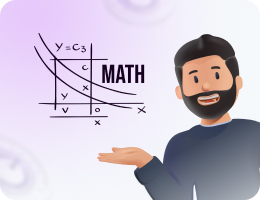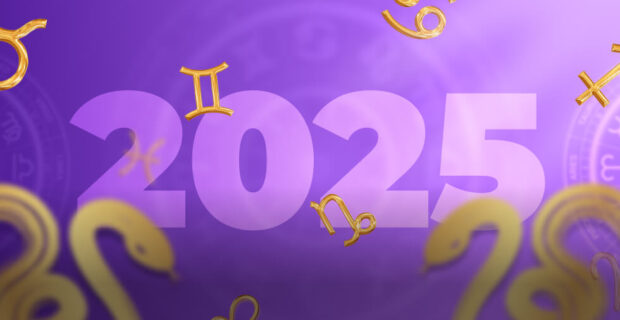Understanding Gambler’s Fallacy: Cracking the Code

If we look at the term Gambler’s Fallacy from a scientific point of view, it is actually a misunderstanding of the randomness of events caused by the cognitive functions of the brain. We want to believe that everything in the world is regular, moreover, this belief is often supported by coincidences – a coin cannot show Head forever and sooner or later will fall the other way. At the same time, the theory of probability considers each event as a separate event, independent of the previous one. That is, the chance of getting Tails every time is 50/50, regardless of how many times Heads has fallen.
Psychologists believe that the gambler’s fallacy is largely due to our tendency to look for patterns and predictability in random events. Such delusion is part of human nature. Because the human brain has evolved to recognize and respond to patterns in the environment. In everyday life, this ability will help you make good decisions and distinguish them from erroneous strategies.

Origin of the term
In 1913, a very unlikely event occurred in the Monte Carlo casino – on August 18 at the roulette table, the black field fell 26 times in a row. This is what started the research into such a phenomenon as player delusion. All who were at the table at that time, persistently bet on red in the hope that now the number with the red color will fall out. However, contrary to all expectations, the roulette showed black. Players, in their turn, still continued to believe that if black fell so many times, the next time will certainly be red, and raised the bets, losing fortunes.
This case clearly demonstrated how cognitive distortions can influence people’s behavior. Despite the fact that each roulette spin is an independent event with an equal probability of landing black or red, players continue to look for patterns where there are none. This incident became a classic example of the gambler’s fallacy and showed how easy it is to fall into the trap of misconceptions about randomness.

Examples and mathematical reasoning
Researchers of the gambler’s fallacy have used the formulas of probability theory to calculate what the odds were of the sensational Monte Carlo event, and what the odds are of a roulette player at all.
The probability of getting black on a roulette reel 26 times in a row is 0.0000015%. Each spin, the probability of getting both red and black for European roulette with one green Zero field is 48.60%. For American with two Zero, the chances are slightly lower – 47.40%. It is worth noting that the probability is the same for both the first and 10, 1,000 and even 1,000,000 roulette spins, regardless of the previous results.
Let’s do a simple experiment and flip a coin 10 times:
- Heads, Tails, Heads, Heads, Heads, Heads, Heads, Tails, Tails, Heads, Heads, Heads, Heads, Heads.
We got 3 Tails and 7 Heads, that’s 30/70, given that this game is 50/50 odds.
Let’s toss 10 more times:
- Heads, Tails, Tails, Heads, Tails, Heads, Tails, Tails, Heads, Tails, Heads, Heads, Tails.
We got 6 Tails and 4 Heads, that’s 60/40 with the same odds. As you can see, the sequence of values is uneven.
We flipped the coin another 500 times and got these results:
- Tails – 236 times, 47.20%;
- Heads, 264 times, 52.80%.
Having a game with 50/50 odds, we got 30/70, 60/40 and 47.20/52.80. The more tries – the more uniform the result. This experience confirms the Central Limit Theorem Formula, by which scientists determine the sample size to obtain correct statistical results. Having made calculations according to this formula, we found out that we need to flip a coin at least 40,000 times to get as close as possible to the 50/50 value with a minimum error of 1% for 95% of cases. So even 100 consecutive Tails rolls in a series of 40,000 tosses will not guarantee that the 101 results will be Heads. At the same time, you will not get more than 20,000 Tails during the experiment.
| Experiment | Heads | Tails | Percentage of Heads | Percentage of Tails |
|---|---|---|---|---|
| First 10 flips | 7 | 3 | 70.0% | 30.0% |
| Second 10 flips | 4 | 6 | 40.0% | 60.0% |
| Total 20 flips | 11 | 9 | 55.0% | 45.0% |
| 500 flips | 264 | 236 | 52.8% | 47.2% |
Gambler’s Fallacy and Popular Gaming Strategies

At the heart of many game strategies is precisely the player’s delusion. And such strategies even work, creating a false impression of the presence of regularities. For example, in the tactics of Martingale all based on the increasing probability of the desired result. On the other hand, the card count in blackjack is not subject to delusion – here the eliminated cards still affect the results of new hands.
On the other hand, card counting in blackjack is not subject to fallacy. In this strategy, removed cards affect the results of new hands. Card counting players keep track of which cards have already been drawn to estimate the likelihood of certain cards appearing in the future. Thus, card counting is based on real mathematical principles and statistics, and not on false notions of randomness.
Other common strategies susceptible to the gambler’s fallacy
D’Alambera system
In this strategy, the player increases the bet by one unit after a loss and decreases by one unit after a win. The basic idea is that wins and losses will eventually equalize each other. However, as with Martingale, a long series of losses can lead to significant losses.
Fibonacci system
Players increase their bets according to the Fibonacci sequence (1, 1, 2, 3, 5, 8, 13, etc.) after each loss. One win is expected to compensate for all previous losses. Although this system appears to be safer than Martingale, it is also based on the false assumption that winning is inevitable.
These strategies, while seemingly logical, are subject to the gambler’s fallacy and can lead to financial losses if real odds and probabilities are not taken into account.

Martingale for roulette – what are the dangers of Gambler’s Fallacy
Martingale is applicable in bets with equal odds, for example, on red/black in roulette. You need to bet on the same thing all the time, doubling your bet when you lose. The basic idea accurately reflects the false Monte Carlo judgment – one color cannot fall all the time, with each loss the chance of winning increases. The danger of the strategy is that roulette tables have limits. If you start with 1, and double it, already on the 10 game round the bet will increase to 512, and on 20 – to 524,288. We remember that black can fall 26 times, and most roulette tables have limits up to $10,000, with a maximum of $50,000.
| Round | Bet |
|---|---|
| 1 | $1 |
| 2 | $2 |
| 3 | $4 |
| 4 | $8 |
| 5 | $16 |
| 6 | $32 |
| 7 | $64 |
| 8 | $128 |
| 9 | $256 |
| 10 | $512 |

Hi-Lo card counting – why the fallacy doesn’t work
In blackjack, experienced players count cards using the Hi-Lo system. Numbers between 2 and 6 are worth 1 point, 10 and pictures are worth minus 1, and the rest are worth 0 points. When cards are drawn from the deck, the player must add their scores in his mind.
For example, if K, K, Q, 6 and A came out, the score will be -2, it means that we have a lot of cards out that give 10 points and a high probability of winning. With a positive number the situation is the opposite, the probability of winning is higher. The system does not rely on the idea of a mandatory win after a loss, allows you to really evaluate the chances, and therefore is not subject to player error.
| Cards | Value |
|---|---|
| 2-6 | +1 |
| 10, J, Q, K | -1 |
| 7-9 | 0 |
Gambler’s Fallacy in Popular Games
All games of chance are subject to gambler’s error because they are all about luck. This even applies to poker, which is generally considered a game of skill, because the player at the table may believe that the series of losses is about to end and he will finally have a strong hand. However, some games are easier to fall for the player fallacy than others, and we’ll tell you why.
Online slots
On average, slot machines take up between 85% and 95% of all games in modern online casinos. It is a simple game in which nothing depends on you – you just spin the reels, and hope that the best combination of symbols will fall out. The probability of you winning is clearly defined by the features:
- RTP tells you how much money you will get back with the bets you place. If you take an average value of 96%, every $100 bet, you should get $96 in winnings. But it is important to know that the indicator is calculated on 1 billion spins.
- Volatility tells you about the dynamics of payouts. At high value wins will be rare but large, at low – frequent and small, at medium size and frequency of winnings can vary.
Parameters slot machine programmed in advance, and it is this that misleads players. After all, it turns out that if you have already put $100, and nothing won, it is the next spin will bring you the same $ 96. However, recall that this statistic is only relevant for 1 billion spins, so you can easily lose all $200, $500 or even more, and not get a single payout. At the same time, another player will make just a couple of bets and hit the jackpot.
Roulette
The Monte Carlo fallacy was made in roulette, so it is not surprising that delusion plays a big role in this game. Moreover, we are talking not only about bets on equal chances – today, the gambler’s fallacy is used even on single numbers to give false hopes of a quick victory. For example, in some types of roulette there are statistics with so-called Hot and Cold numbers.
Hot numbers appear more often than others, which makes you believe that they are a win-win. Cold ones are rarely drawn, which reflects the classic concept of error – the longer a number has not been drawn, the higher the chances that it will appear now. The player is mistaken in both cases – each spin the probability of winning with a Straight Up bet is 2.703% in a game with one Zero, and 2.632% in a roulette with two Zeros.
Baccarat
Another popular table game that relies on gambler’s fallacy is baccarat. Here skill and experience do not play any meaning, because the point comes down to simply guessing the winner. The addition of cards to 7 or 8 points is carried out automatically in accordance with the established rules. The Banker’s probability of winning is always 45.86%, the Player’s is 44.62%, and the chances of a Draw are 9.52%.
Most online and live baccarat options provide a display of statistics from recent games. These statistics are supposed to show the player the general trend of results. You might think that if the Banker bet often wins, then the next winner will be the Player. In doing so, you are actually repeating the mistake of those who believe in Hot and Cold numbers on the roulette wheel.
Monte Carlo fallacy – how to benefit
Knowing about the gambler’s fallacy already gives you some advantage over the casino – you will not blindly believe in marketing techniques. Here are some simple tips to help you benefit from the Monte Carlo fallacy:
- Ignore Hot and Cold trends: These are marketing tools and do not affect outcomes.
- Avoid increasing bets during losing streaks: Losses do not influence future wins.
- Use betting strategies wisely: Recognize the limits and avoid overbetting.
- Don’t rely on past results: Each game is independent.
Understanding that each game outcome is independent enhances control over gaming behavior and reduces the risk of falling into the fallacy.
Conclusion
Gambling is inherently based on chance. Searching for patterns or believing that a series of losses will lead to a win is a cognitive error. Enjoy gambling as an entertainment form, not as a money-making strategy, and avoid the pitfalls of the Gambler’s Fallacy.









